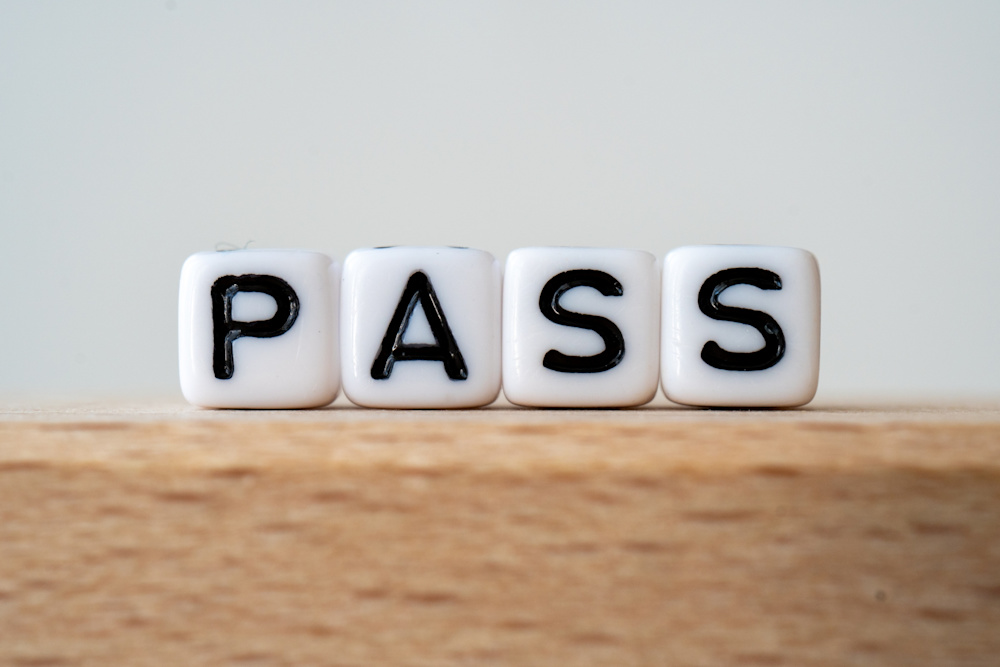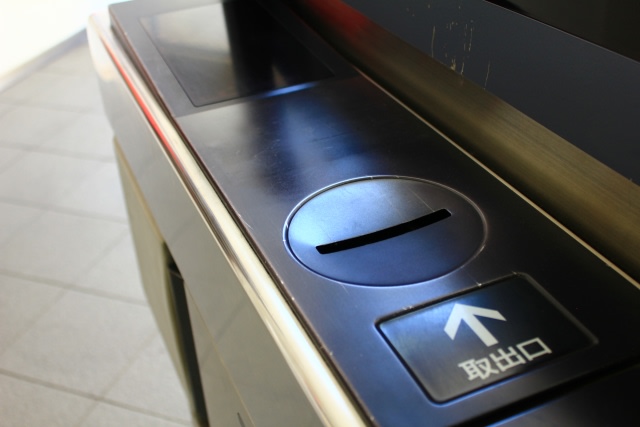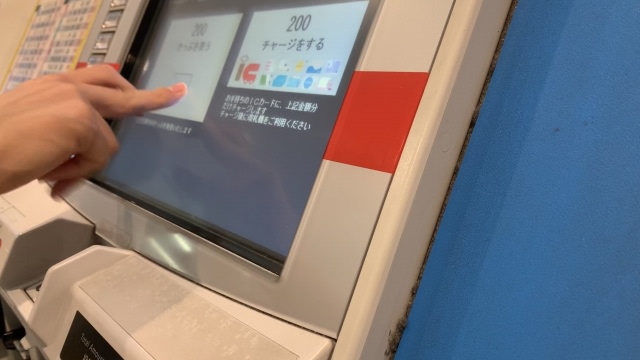Updated May 29, 2025
How to Buy a Commuter Pass in Japan: A Guide for 2025
If you’re settling into life in Japan for work, study, or adventure, a commuter pass, known as a "Teikiken" (定期券), is a must-have for navigating the country’s world-class rail network.
This prepaid pass saves you time and money by covering unlimited trips along a specific route, making daily commutes smoother and more affordable. Whether you’re commuting to work every weekday or heading to school from your dorm, a commuter pass will make your life that much easier.
In this post, we'll explain how to buy a commuter pass in Japan, what to do if you lose it, and how to use the digital options for even more convenience.
In this article: 📝
Japan Commuter Pass, Explained
At its core, a Teikiken is a prepaid ticket that allows unlimited travel between two specific stations for a fixed period.
Instead of buying individual tickets every day, which can quickly add up, a commuter pass covers all your rides along that route, whether you take the train once or ten times a day.
You can choose from one-month, three-month, or six-month durations. The longer the pass duration, the more you save.
Types of Commuter Pass Japan
There are two main types of commuter passes available: one for adults and one for students. Both serve the same basic purpose, but student passes come with additional documentation requirements and often offer a greater discount to support educational travel.
Adult Commuter Pass Requirements
The good news is that anyone can buy the adult commuter pass. You don't need any specific documents or identification to make the purchase, and you don't have to be a Japanese citizen or resident either.
This card is designed to be convenient and accessible to everyone who needs it. Once you buy the pass, you can use it as often as you like, but only for the route you’ve registered.
For example, if you live near Shibuya Station and work in Shinjuku, your pass would cover unlimited rides between those two stations (and all stops in between). Just keep in mind that it’s only valid for the exact route printed on the card.
Student Commuter Pass Requirements
While the adult pass is open to everyone, the student commuter pass is only for those enrolled in educational institutions.
To buy a student pass, you’ll need to show a certificate or document from your school that confirms your enrollment and commuting route.
Many train companies will also ask for a student ID card or other documentation, and the requirements may vary depending on the operator. We recommend checking with staff at your local station to ensure you have all necessary documents before you try to buy one.
Student passes can be an incredible way to save money, especially for long-distance commuters. They’re available for the same timeframes of one, three, and six months, but are generally cheaper than adult passes. Just like the adult version, a student pass allows unlimited travel between your home station and your school.
That said, keep in mind that these passes come with strict rules.
For example, they can only be used by the student named on the pass, and only for travel directly to and from the school. You can't lend it to a friend or use it for unrelated trips. The route also has to match what's been approved by the school and the train company.

General Rules for Both Japan Commuter Pass Types
There are a few common rules that apply to all commuter passes in Japan.
First, the pass is non-transferable, meaning only the person who bought it can use it, as it’s tied to your identity.
Second, the pass is valid only for the route indicated on the ticket, so you can't use it to travel to completely different destinations. That said, stopovers and boarding at intermediate stations within the commuter section are permitted, so you’re not totally restricted.
Lastly, if your commute involves multiple railway lines, such as both JR and private operator lines, you may face some restrictions on the combined routes you can register. Again, your best bet is to check with the station staff for details.
Commuter Pass Tokyo, Osaka, Kyoto, and More: Which Card Do You Get?
Most people get their commuter passes in the form of an IC card. These are rechargeable smart cards that you can tap at ticket gates, making entry and exit super smooth. Depending on where you live in Japan, the card might have a different name.
In Tokyo, the most common cards are Suica and PASMO. If you’re in Osaka or Kyoto, you’re likely to encounter ICOCA or PiTaPa. Other regions have their own versions, like Kitaca in Hokkaido, TOICA in Nagoya, or SUGOCA in Kyushu. Nimoca, Manaca, and Hayakaken are also region-specific versions that function similarly.
These IC cards aren't just for trains. You can also use them to pay at convenience stores, vending machines, and even some restaurants. Most cards now come in both physical and app-based forms.
For instance, Suica and PASMO have smartphone apps that let you purchase and manage your commuter pass digitally. This is especially useful if you tend to lose physical cards or want the flexibility of topping up from your phone.
How To Buy Commuter Pass Japan: All Methods Explained
When it’s time to buy your pass, you've got three main options:
Going to a ticket counter
Using a ticket machine
Purchasing online
The method you choose will depend on your personal preferences and circumstances.
Ticket Counters
Buying from a ticket counter is great if you're new to the system or want to double-check that everything is correct. The staff can help you select the right stations, dates, and card type. This can be especially helpful if your route includes transfers or involves multiple train companies.
The downside with this method is that counters are only open during business hours and can be quite crowded during peak times, particularly in April and September when students are starting school and renewing their passes.
Keep in mind that English proficiency among staff can vary, especially outside major cities, so having a translation app might be a good idea.
Ticket Machines
Ticket machines are usually available throughout station hours and are equipped with English menus in urban areas.
These machines are pretty intuitive after a few uses, and they're a convenient option if you're short on time.
That said, the first time can be a bit confusing, especially if there's a line behind you and you feel rushed. We recommend looking up a tutorial online beforehand to be more prepared.
Purchasing Tickets Online
As online purchasing becomes more popular, services like Mobile Suica allow you to purchase a digital commuter pass directly from your phone, at any time of day. This is a fantastic option for tech-savvy users or those who don’t want to stand in long lines.
The downside? If you run into technical issues, there’s no immediate in-person help, so ensure your device is set up correctly before starting.
How Much Is a Commuter Pass in Japan?
The cost of a commuter pass depends on your route and the duration of the pass.
A one-month pass generally offers a small discount compared to buying daily tickets, while three- and six-month passes provide even better value.
For example, if your daily commute costs 400 yen one way, that's 800 yen per day for a round trip. Over 20 workdays, that's 16,000 yen. A one-month commuter pass for the same route might cost around 11,000 yen, saving you 5,000 yen or more.
Student passes, as mentioned earlier, are even more affordable. Some long-distance student commutes that would cost over 20,000 yen per month using regular tickets might drop to under 10,000 yen with a pass. It’s a big help for students who often work with limited budgets and have long daily commute times.
Speaking of prices, you might also want to check out how to read your Japanese payslip to understand how your commuter expenses fit into your monthly budget.
Can I Travel Outside My Designated Route?
We established that the commuter pass is for a designated route only, but what happens if you need to travel beyond your designated route?
If, say, you want to meet a friend for dinner a few stops past your usual destination, you can still use the train. You’ll just need to pay an additional fare for the portion of the journey that falls outside your commuter pass coverage.
This extra fee will either be deducted automatically from your IC card balance or paid manually at the station.

What Happens if I Lose My Commuter Pass Japan?
Losing your commuter pass can certainly be inconvenient, but there’s a safety net if you've registered your card.
If you lose a registered IC card with a commuter pass loaded onto it, you can report the loss and have the card suspended. In most cases, the remaining balance and the validity of the pass can be transferred to a new card for a small fee.
Unfortunately, unregistered cards can’t be recovered, so registering your card is a smart move to protect your investment.
Registering or Switching to A Digital Commuter Pass Japan
Switching from a physical commuter pass to a digital one is easy, thanks to services like Mobile Suica and Mobile PASMO. All you have to do is register your existing card.
Before starting, ensure that your device’s region is set to Japan to access and download the necessary apps. Here’s how to add your commuter pass to both iPhone and Android devices.
For iPhone Users
iPhone users can add a new card through the Wallet app, register their existing card digitally, or purchase a ticket directly through the Suica or PASMO apps.
How to Set Up Suica or PASMO in Apple Wallet
First, open the Wallet app on your iPhone. Then:
Tap the “+” button to add a new card.
Select “Transit Card” and choose either “Suica” or “PASMO.”
Follow the prompts to add the desired amount to your card.
How to Transfer an Existing Physical Card
For this method, first ensure that your iPhone’s region is set to Japan. Then, follow these steps:
In the Wallet app, tap the “+” button.
Choose “Transit Card” and select “Suica”.
Tap “Transfer Existing Card” and follow the on-screen instructions to transfer your physical card to your iPhone.
Keep in mind that your physical plastic card won't work after the transfer, and the amount registered will be transferred to the digital card.
How to Purchase a Commuter Pass Through the App
Download the Suica or PASMO app from the App Store. Once you do so, follow these steps:
Link the app to the Suica or PASMO card in your Apple Wallet.
Navigate to the commuter pass section within the app.
Enter your regular commuting route details.
Select the desired validity period (e.g., 1-month, 3-months).
Complete the purchase using Apple Pay.
For Android Users
Android users can also register and create new commuter cards in Google Pay or purchase tickets through the app.
However, you must first ensure your Android device supports the “Osaifu-Keitai” (mobile wallet) feature, which is common in Japan.
How to Set Up Suica or PASMO in Google Pay
Open the Google Pay app on your device. Then:
Navigate to the “Payment” section.
Select “Payment Method,” then choose “E-money.
Pick either “Suica” or “PASMO” from the list.
Follow the prompts to add the card to your Google Pay.
How to Purchase a Commuter Pass Through the Apps
Download the Suica or PASMO app from the Google Play Store, and launch the app. Following the steps below should help you get a commuter pass in no time:
Link the app to your card in Google Pay.
Within the app, navigate to the commuter pass section.
Input your regular commuting route details.
Choose the desired validity period for the pass.
Complete the purchase using your preferred payment method.
Additional Tips for Buying a Pasmo or Suica Commuter Pass Japan
To make the most out of your pass, here are a couple of extra tips:
Avoid peak seasons: April and September are busy with students starting school, leading to long lines at ticket counters and machines. Buy or renew your pass outside these months if possible.
Mind public holidays: During Golden Week in May or Silver Week in September, you may not commute as often. Choose a start date that skips these periods to maximize value.
For more tips about optimizing your commute and the fastest way to buy Shinkansen tickets in Japan, check out our Smart EX article.

Conclusion on Japan Commuter Pass
Whether you’re a student heading to university every morning or a professional commuting to the office, the Teikiken system is designed to support your lifestyle. With options for both physical and digital passes, multiple purchasing methods, and broad compatibility across regional rail networks, there’s a solution for everyone.
Just be sure to check with your local station staff if you have any questions, and take a little time to understand your options before making your purchase.
While this covers everything about commuter passes, you might also want to learn about the Zairyu (residence) Card, another crucial document for residents in Japan.
Get Job Alerts
Sign up for our newsletter to get hand-picked tech jobs in Japan – straight to your inbox.








